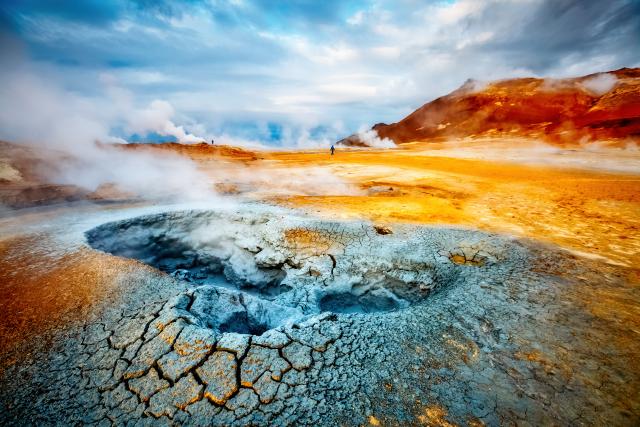
(Source: Creative Travel Projects/Shutterstock.com)
Presented by:

Editor's note: This article appears in the E&P newsletter. Subscribe here.
As the world looks to decarbonize its energy portfolio, alternative energy resources have seen tremendous growth. In fact, in April 2019, U.S. electricity generated from renewable sources exceeded coal-fired generation for the first time. Once seen as uneconomical, technological advances are helping make renewables more competitive.
Up until now, geothermal energy, both sustainable and renewable, has remained largely untapped. The time is here for geothermal to take its place as a recognized and viable renewable resource. Why?
- Geothermal is always available. As an underground source of energy, it isn’t dependent on the sun shining or the wind blowing.
- Both its surface footprint and its carbon footprint are smaller than those of other renewables.
- It is versatile. It can heat, cool and generate electricity.
- It has even greater potential—new project designs that eliminate the need to be near areas of volcanic or tectonic activity, expanding geothermal’s reach to areas such as Europe and parts of North America.
So, what’s holding geothermal back?
Mostly, it’s simple economics. Geothermal projects require high levels of capital investment up front—typically between $2 million and $7 million per well. Even though those costs can be recouped over the long term, it’s no surprise that many operators want a quicker payout or want to reduce costs and eliminate as many risks as possible.
How can they do that? One way is by choosing and deploying the right technology that performs reliably, meets the challenges of HP/HT environments and delivers on project goals.
That’s harder than it sounds. In 40-plus years of working in geothermal, with expertise in both surface and subsurface operations, Baker Hughes has learned that it takes a special set of capabilities to move geothermal projects from design phase to commercial success.
First, it takes a technology portfolio that spans the life cycle of the geothermal asset:
- Well construction, including expertise in planning, designing and constructing wells in extreme conditions;
- Surface production, both reliably conveying the heat transfer and producing power from it; and
- Integration and project management capabilities to ensure that projects are more efficient, more predictable and delivered on time.
Second, it takes investment: The high upfront capital costs required by geothermal projects usually means that developers are looking to partner with companies that have the confidence, willingness and resources to invest in the project’s success.
Last, it takes commitment: Geothermal is a long-term game, and it requires a long-term commitment of time and resources. Over a period of time, technology challenges will change, and best practices will always evolve.
Baker Hughes is committed to making energy cleaner, safer and more efficient, and helping geothermal reach its full potential is one way of delivering on that commitment. The company seeks to make geothermal projects more efficient, more predictable and more prominent in the renewable energy mix.
But no company and no industry, however well-intentioned or well-resourced, can alone help society reach net-zero carbon emissions. Partnership and collaboration are critical to advancing geothermal and other less-emissive energy sources with speed and at scale.
The challenges are significant. But with the commitment of industry, technology can advance to the point where public support for geothermal will grow, setting the stage for further technological breakthroughs. That could spark a virtuous cycle, one that holds the potential to make geothermal a real game changer in forging the transition to a lower-carbon energy future.
About the author: Ajit Menon is the oilfield services energy transition leader with Baker Hughes.
Recommended Reading
Hess Corp. Boosts Bakken Output, Drilling Ahead of Chevron Merger
2024-01-31 - Hess Corp. increased its drilling activity and output from the Bakken play of North Dakota during the fourth quarter, the E&P reported in its latest earnings.
The OGInterview: Petrie Partners a Big Deal Among Investment Banks
2024-02-01 - In this OGInterview, Hart Energy's Chris Mathews sat down with Petrie Partners—perhaps not the biggest or flashiest investment bank around, but after over two decades, the firm has been around the block more than most.
Petrie Partners: A Small Wonder
2024-02-01 - Petrie Partners may not be the biggest or flashiest investment bank on the block, but after over two decades, its executives have been around the block more than most.
From Restructuring to Reinvention, Weatherford Upbeat on Upcycle
2024-02-11 - Weatherford CEO Girish Saligram charts course for growth as the company looks to enter the third year of what appears to be a long upcycle.
JMR Services, A-Plus P&A to Merge Companies
2024-03-05 - The combined organization will operate under JMR Services and aims to become the largest pure-play plug and abandonment company in the nation.





